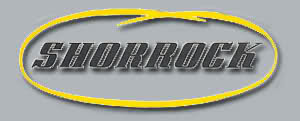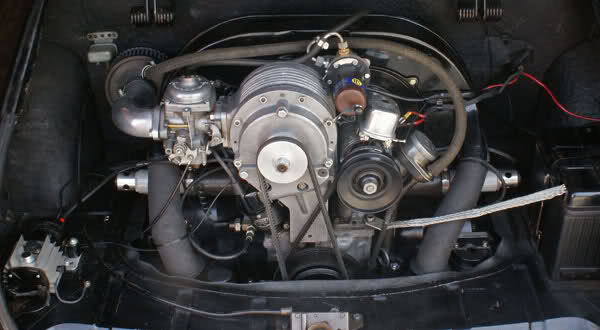From our friend John Moxon, Judson Registry master, and vintage speed specialist:THE SHORROCK SUPERCHARGER
Amongst people who know superchargers the name “Shorrock” stands as the ultimate in quality and design of all the small superchargers of the first half of the twentieth century.
The company, the work of Christopher Shorrock was launched in 1934 as “Centric Superchargers Ltd.”, Preston, Lancashire, U.K.. Just after the war the company was renamed, “Shorrock Superchargers Ltd.” and after several moves around the Preston area the company settled into a small factory in Wednesbury, north west of Birmingham in 1957.
The larger part of the Shorrock Supercharger market were post-war British small cars like MG, Morris, Austin etc.. Sales were brisk amongst British small car enthusiasts and the Shorrock reputation was enhanced by successes on racing circuits and some exceptional feats on the Bonneville Salt Flats in Utah. Stirling Moss drove a Shorrock Supercharged 1500cc MG EX 181 to 245.64mph at Bonneville in 1957 and Phil Hill drove a similar car to 254.91mph two years later.
It seems Shorrock were quite happy with their product range centred on the small-engined British saloons and sports cars with seemingly little interest in tapping in on the European car market. If it wasn't for the dissatisfaction of EMPI's Joe Vittone in the performance of small superchargers made for the VW in the early '60s, it's doubtful if a VW version of the Shorrock would have ever seen the light of day. It's true that existing superchargers for the VW were, at the time something of a compromise in quality versus price so when Joe Vittone visited the UK in 1963 he dropped in on Christopher Shorrock to discuss whether the Shorrock could be adapted to fit the VW.
It was decided the VW version would be a modification of the existing Shorrock C75b and designated the C75bv and it would only be for the later 40hp 1200cc engine. The outer casing of the existing model had to be recast to realign the intake for the side-draft carb to the 9 o'clock position and after extensive testing the Kit was launched by EMPI in early 1965.
The collaboration between Shorrock and EMPI wasn't a great success as very few superchargers were sold. That's not to say the Shorrock Kit for the VW was no good...far from it. Shorrock, as we have seen had the reputation as the "Rolls Royce" of superchargers; far and away the best engineered of all the small superchargers. Unfortunately they were just too expensive to crack the volume VW market of which Judson held a stranglehold. In 1965 the basic EMPI Shorrock Kit sold for $395...at the same time you could buy the Judson Kit for $144.
So why did the Shorrock Kit cost so much more than the Judson?The Judson blower is of the sliding vane type, where the vanes slide in and out of an eccentrically positioned rotor, sealing against the blower chamber wall through centrifugal force to produce the boost pressure. It’s simple and effective but does produce extra heat by the friction action of the vanes in contact with the casing so the unit needs extra cooling and lubrication through an external oil supply.
One of the strengths of the Judson was it utilised virtually all the stock hardware. You just bolted your Judson to the intake manifold made a few minor adjustments and in about 4 hours you were up and running. However these Judson strengths could also be considered their weaknesses, in that using the stock fuel pump, carb etc was a compromise in an effort to keep the price down.
The Shorrock is also a vane supercharger but a fixed vane and very much more complex in construction. The vanes are held away from the chamber walls at a constant clearance of about 1 thousandth of an inch, which means no heat build-up through friction. As a result the Shorrock runs cooler than the Judson; it also produces more power.

The Shorrock Kit for the VW was made to function at maximum efficiency with little regard to cost. For example the VW Solex carb was judged to be incapable of delivering a precise amount of fuel throughout the rev range so Shorrock used a constant vacuum Stromberg carb and an electric SU fuel pump in place of the stock VW mechanical pump. The stock VW intake manifold was replaced by a wide diameter manifold with rubber sleeved joins similar to the later VW twin port manifold. These Shorrock kit refinements and the basic higher engineering costs explain the disparity in price between it and the so-called, “budget” supercharger kits.
EMPI sold The Shorrock in a number of packages from 1965:The basic Shorrock C75bv blower kit as the PSSV-500 for the 40hp engine producing 72hp - $395.00
The Shorrock Kit with an EMPI Big Bore Kit, the PBBV-100, 1352cc producing 78hp - $493.50
The Shorrock Kit with an EMPI 1500 Stroker Kit, the PSKV-601, producing 82hp - $684.50
And top of the range with an EMPI 1600 Stroker Kit, the PSKV-600 producing 85hp - $794.50
You see the top quality of the Shorrock Kit came at a high price for 1965…it still does.
So, what could you have expected for your money? EMPI quoted figures from a road test published in the April 10th, 1964 issue of “Autocar” magazine. The main points of the test emphasised the much improved engine refinement, which I can confirm as a six-cylinder smoothness. The reported top speed of 89mph from a 1200 Beetle along with greatly reduced 40-60mph time in top gear, chopping 11 seconds off the stock figures.
 The final question is how many useable VW Shorrock Kits still exist?
The final question is how many useable VW Shorrock Kits still exist?That's a difficult question when we don't even know how many VW Shorrock Kits were produced...estimates range from 300 down to less than 50 produced.
VW Kits running on VWs today? One maybe two but I have a feeling that in the coming years you will see more, they are out there and Alejandro Martin is the man who will probably be supplying most of them.
Once driven you begin to realise what Joe Vittone saw as an irresistible force in supercharging, sadly he didn't account for peoples overwhelming desire for the cheaper option.
J.M.

